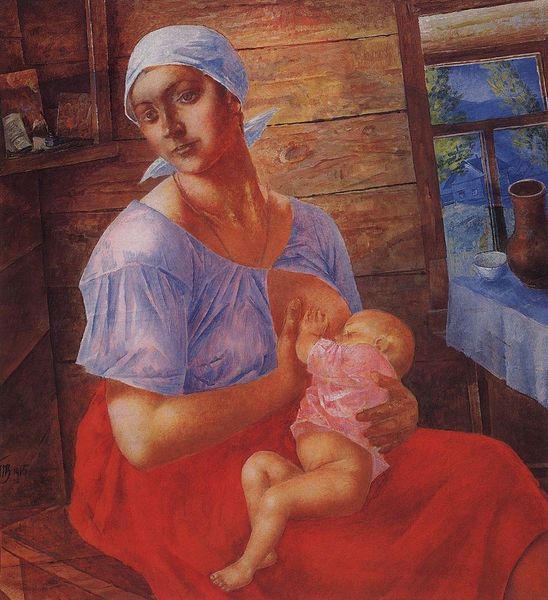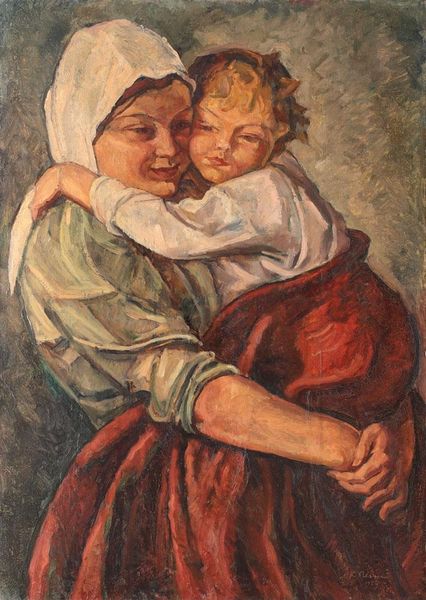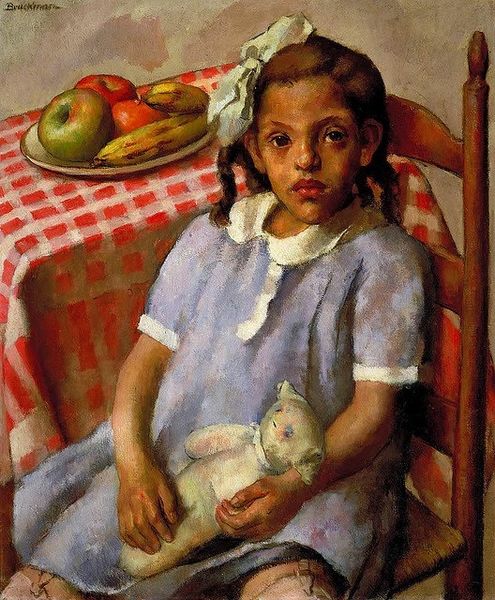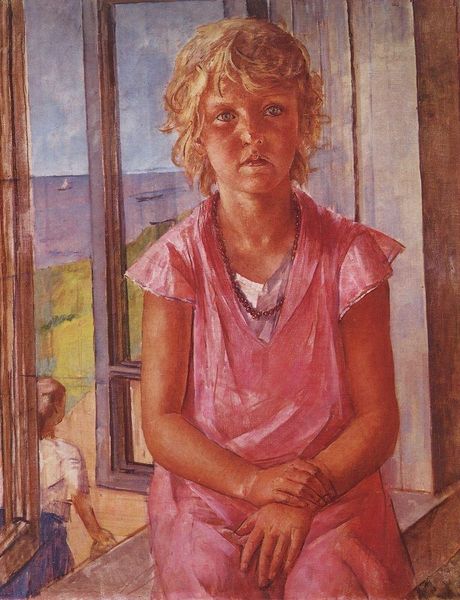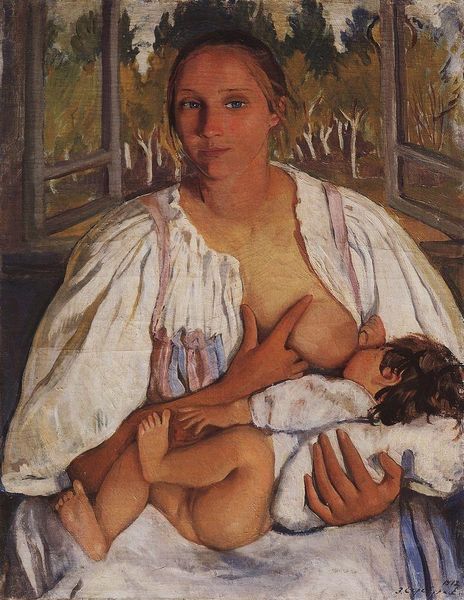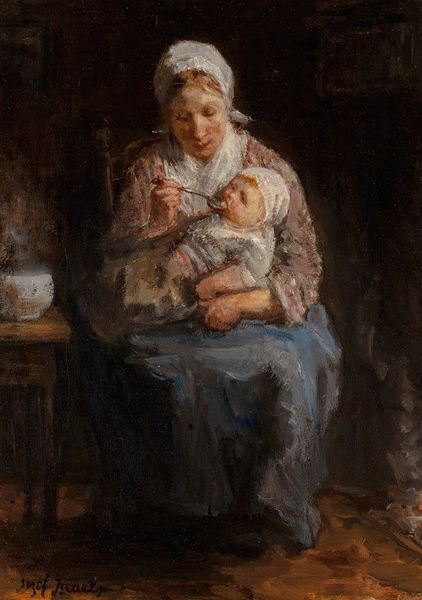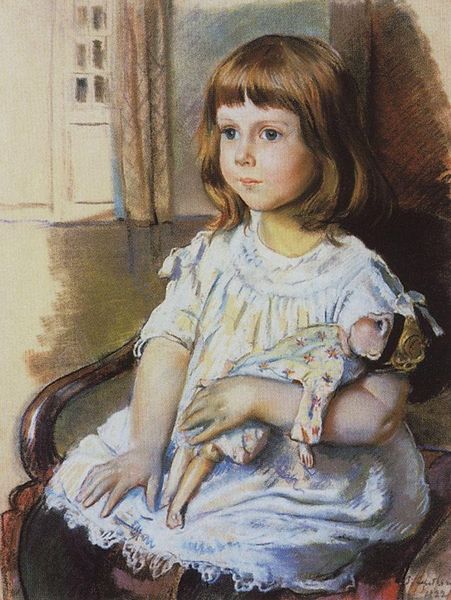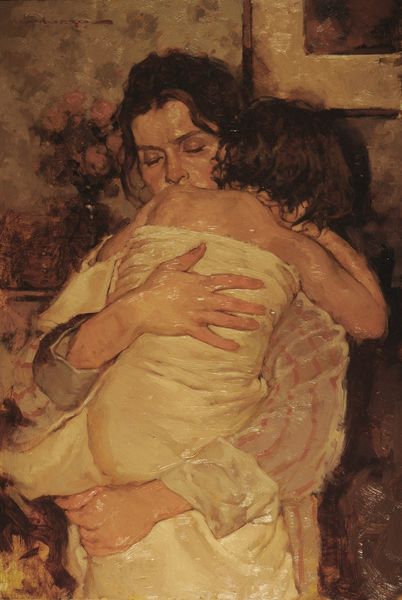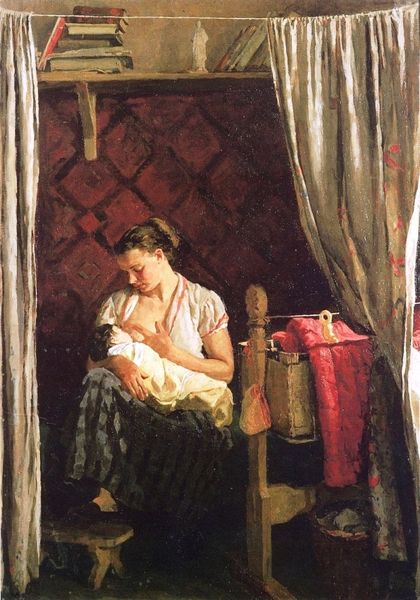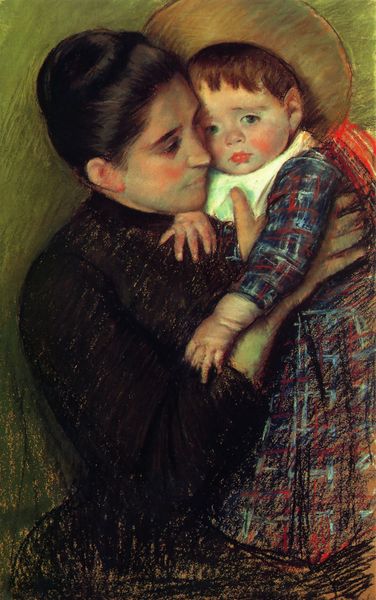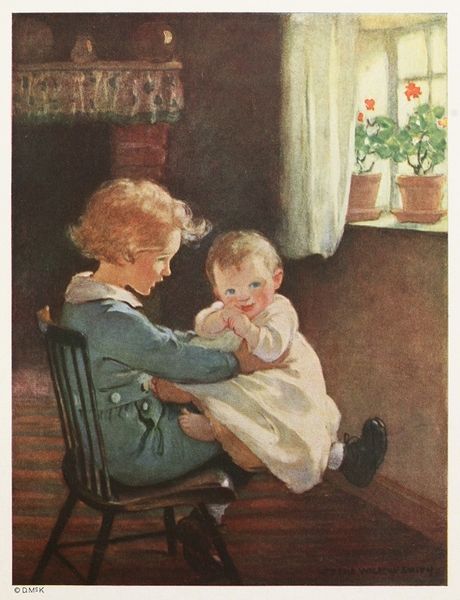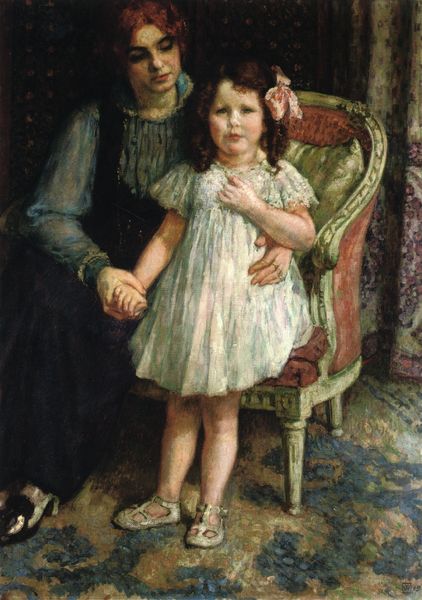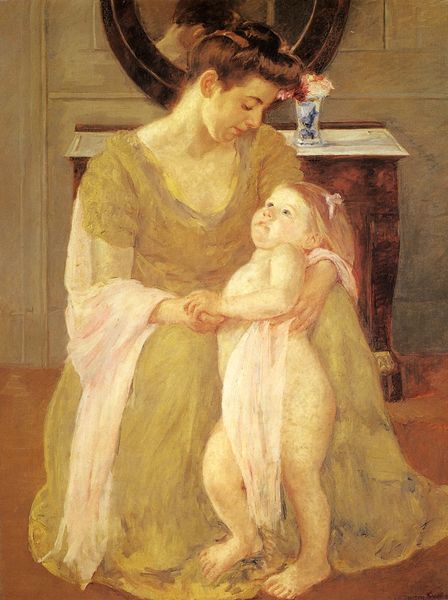
painting, oil-paint
#
portrait
#
painting
#
oil-paint
#
soviet-nonconformist-art
#
figuration
#
oil painting
#
genre-painting
#
portrait art
#
realism
Copyright: Public domain
Editor: Here we have Kuzma Petrov-Vodkin's "Girl with a Doll" from 1937, an oil painting. I'm struck by the girl's direct gaze; there's a certain seriousness in her eyes. What do you see in this piece, beyond a simple portrait? Curator: It's precisely that gaze we need to unpack. Consider the year, 1937, in the Soviet Union. This was a period of immense social and political upheaval, Stalin's Great Purge. What does it mean to portray childhood during a time when innocence was so fragile, so easily corrupted or lost? Is this a straightforward representation of girlhood, or something more? Editor: I hadn’t considered the historical context so directly. You're suggesting the painting might be commenting on the anxieties of the era? Curator: Absolutely. Think about the doll itself. It's rather crudely made, its face somewhat worn. Does it represent the idealized vision of childhood often promoted by propaganda, or something more closely resembling the reality for many children at the time? How might this image be received by viewers accustomed to seeing idealized images of children as the future of the revolution? Editor: So, it’s a complex interplay between individual portraiture and broader social commentary, challenging the propaganda. It makes you wonder what the artist intended to communicate about identity. Curator: Exactly! By juxtaposing the girl’s solemn expression with the doll’s worn appearance, Petrov-Vodkin invites us to consider the weight of history on even the youngest generation. It disrupts the narrative. How do images of women and children function within propaganda? Editor: I’m starting to see how deeply political this seemingly simple portrait is. I was so focused on the subject. Thanks for widening my perspective! Curator: Art is rarely created in a vacuum; understanding its social and political contexts can unlock so much more than meets the eye. Examining representations of women and girls gives us clues to cultural values.
Comments
No comments
Be the first to comment and join the conversation on the ultimate creative platform.
